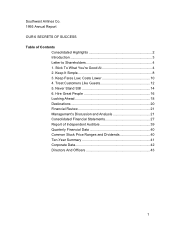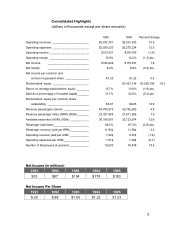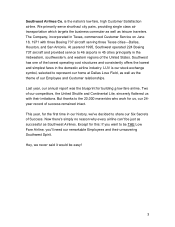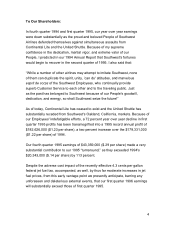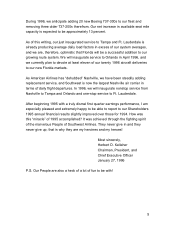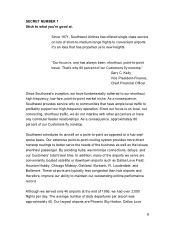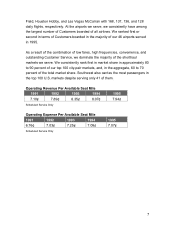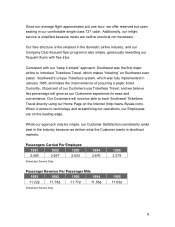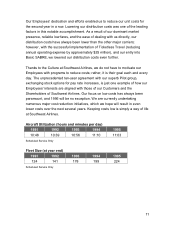Southwest Airlines 1995 Annual Report Download - page 8
Download and view the complete annual report
Please find page 8 of the 1995 Southwest Airlines annual report below. You can navigate through the pages in the report by either clicking on the pages listed below, or by using the keyword search tool below to find specific information within the annual report.8
SECRET NUMBER 2
Keep it simple.
Southwest Airlines honors some simple no-nos: No assigned
seats. No meals. No hassles. No problems. Do our Customers
like the way we do business? You could say they’re simply nuts
about it!
“We believe simpler is always better. Most people’s lives are
complicated enough. Why add to their problems?”
Gary A. Barron
Executive Vice
President-
Chief Operations Officer
Simplicity is a basic philosophy at Southwest Airlines. Southwest was built to
meet the needs of the shorthaul, point-to-point traveler, and this is our focus. We
fly only one aircraft type, the Boeing 737. This drastically simplifies scheduling,
maintenance, flight operations, and training activities.
At yearend 1995, we had 224 Boeing 737 aircraft in our fleet, consisting of 149 -
300s; 50 -200s; and 25 -500s. In 1994, Southwest agreed to be the launch
customer with The Boeing Company for the third time and will add the new -700
model to our fleet beginning in fourth quarter 1997. Our agreement with Boeing
allows for a comparatively lower capital cost, and the -700 is expected to be
quieter, more fuel-efficient and more easily maintainable than its -300
counterpart. The new aircraft model should also have the capability to fly faster,
longer, and higher. The -700 is expected to carry the same type rating as the
rest of the 737 family, thereby allowing for the same simplified scheduling,
training, and maintenance as today. Operating a single aircraft type has proven
to be efficient and safe for our high frequency, shorthaul, point-to-point market
focus.
From an operational perspective, we utilize simple, quick, and efficient ticketing
and boarding procedures to minimize our Customers’ total trip time. We also
avoid costly and complicated interlining arrangements with other carriers.

